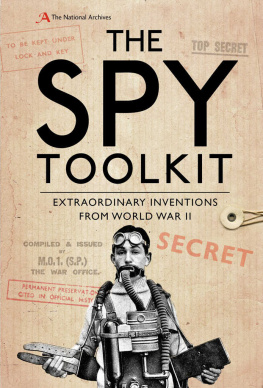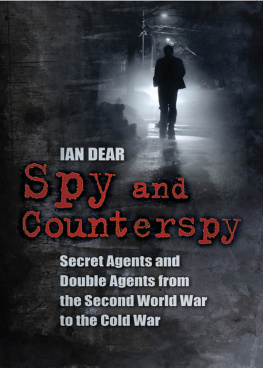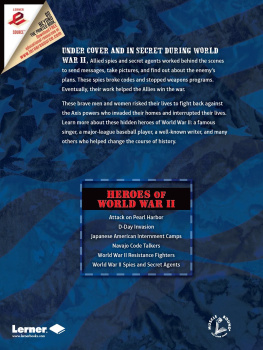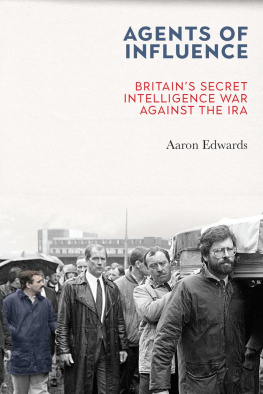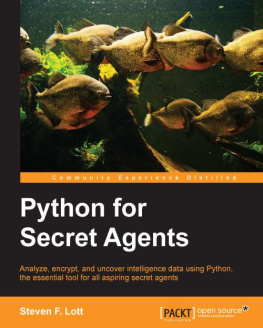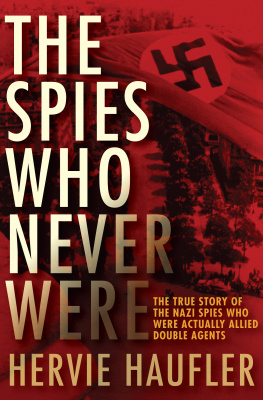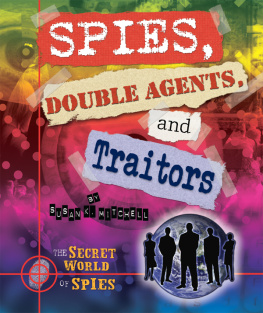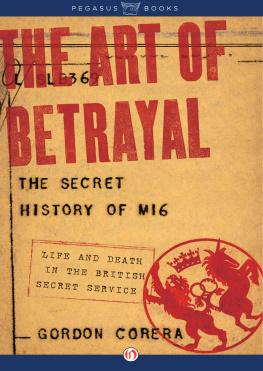


CONTENTS
INTRODUCTION
The image of the secret agent operating behind enemy lines during the Second World War has been etched into popular consciousness. Films such as Now It Can Be Told (aka School for Danger) (1947); Odette (1950); Ill Met by Moonlight (aka Night Ambush) (1957) and Carve Her Name with Pride (1958) have helped to foster the vision of the heroic agent working alongside partisans and resistance fighters to liberate Europe from Nazi domination. The reality was more prosaic. Agents often worked alone and were required to adopt a false identity that concealed their true intentions. To maintain their cover, agents were supplied with specialist equipment and ingenious devices that allowed them to conduct operations while remaining in the shadows. This book provides a pictorial guide to these gadgets and associated spy paraphernalia employed by agents on both sides during the Second World War.
THE ORGANIZATION
Following the fall of France in June 1940 and the evacuation of British troops from Dunkirk, Britain stood alone in the war against Hitlers Germany. In order to take the fight to the enemy, the prime minister, Winston Churchill, created a small band of irregular forces trained to operate behind enemy lines. That new organization was the Special Operations Executive (SOE), sometimes known as the Baker Street Irregulars after the location of its London headquarters. The directive given to SOE was simple: set Europe ablaze. In July 1940, following approval by the War Cabinet, the new agency began to recruit its first agents. SOE was formed by a merger of three separate organizations. The first of these was Section D of the Secret Intelligence Service (MI6), which had been established in the late 1930s to undertake sabotage operations and paramilitary activities. The second was Military Intelligence Research (MIR), a section of the War Office dealing with guerrilla warfare. The third was Electra House, a propaganda department within the Foreign Office. The structure of SOE was divided into three branches reflecting its origins: SO1 (propaganda); SO2 (active operations and agent running); and SO3 (planning). In August 1941, after a dispute with the Ministry of Information, its propaganda arm was transferred to the newly created Political Warfare Executive, under the control of the Foreign Office. This allowed SOE to concentrate fully on running agents and conducting sabotage operations overseas. The principal focus of SOEs operations was on occupied Europe, but it also operated with varying degrees of success in North Africa, the Middle East, South Asia and the Far East. SOE was disbanded in 1946 after the end of the war, its work complete.
THE AGENT
To undertake sabotage and subversion, SOE required a steady stream of willing volunteers who were prepared to risk their lives operating behind enemy lines. Language skills and the ability to blend into the background and to work under pressure were essential characteristics for a successful agent. These skills were just as likely to be possessed by women as by men. Potential recruits came from a wide range of backgrounds. Soldiers, sailors and airmen from France, Poland and the Netherlands who had managed to flee those countries before German occupation were cultivated as potential agents. Other sources included Jewish organizations, and members of the armed forces with poor conduct records but who showed a skill for ungentlemanly warfare were often successfully recruited as well. The organization was ahead of its time in employing women, with many agents recruited from the First Aid Nursing Yeomanry and the Womens Auxiliary Air Force. Knowledge of both the country in which the agent was to operate and its language were regarded as essential.
When SOE became aware of a candidate who was potentially suitable as an agent, a letter was sent inviting them for interview for an undisclosed position in the War Office. The first meeting was usually held in the Hotel Victoria, a large, nondescript building in Northumberland Avenue just off Whitehall in central London. Prior to the interview, the background of the candidate was scrutinized to establish their strengths and weaknesses. These interviews lasted about twenty minutes and were often conducted in French or another foreign language, depending on the background of the candidate. Once it was established that the candidates language skills were sufficiently developed to pass them off as a native speaker, the question of their returning to occupied Europe was raised. Many potential recruits were dual nationals who welcomed the opportunity to return home. Many imagined they were being recruited as interpreters. Before the true nature of the work they would be doing was revealed to them, the candidates were quizzed on their political beliefs in order to expose any pro-German or fascist tendencies. In addition to linguistic skills, other characteristics needed for such clandestine work included singleness of purpose and the initiative to work on their own in addition to working as part of a group.
TRAINING
Once the candidate had passed the initial interview, they were sent on preliminary training to assess their fitness and aptitude for military operations. This also gave the various country sections of SOE the opportunity to assess more fully the suitability of the potential agents before disclosing to them anything about the true nature of their role. Initial training lasted between three and five weeks and included weapons handling, map reading and elementary signalling, with recruits led to believe they were joining a commando unit for raids in occupied territory. Recruits were also taught survival skills and how to hunt and live off the land. The course was designed to be physically challenging and intense, and many of the recruits failed to complete it. Those who were considered unsuitable were then returned to civilian life, none the wiser about the true nature of the work they had been training for, and hence without any danger of them revealing anything of importance.
Those who passed the initial training were then sent to Special Training Schools (STS), where they were told the true nature of their mission and taught how to attack factory machinery, railways and military equipment. The first STS known as Station XVII was located at Brickendonbury in Hertfordshire. One of the instructors at the school was Guy Burgess, the notorious Soviet double agent. The purpose of the school was to train men and women of various nationalities as secret agents who would return to their own countries in order to establish resistance organizations and commit specific acts of sabotage. The students were sent on various courses where they learned how to pick locks, forge documents and operate miniature cameras. They were also trained in how to manufacture improvised explosives from household chemicals. As SOE grew in strength, a further training school located at Arisaig House in Inverness-shire was acquired from the War Office and soon became the headquarters for paramilitary training, which included instruction in the use and application of explosives and demolition charges, guerrilla warfare and silent killing.
An essential aspect of an agents work involved both receiving messages from base and sending messages back to base, with recruits receiving instruction in wireless telegraphy, Morse code and ciphers. At the end of the course, the students were sent to the Central Landing Establishment at Tatton Park in Cheshire, also known as No. 1 Parachute Training School. Initial training consisted of jumping from a tower and from the back of a truck travelling at 30 miles per hour. Once they had learned to land correctly, the students were given a parachute, loaded on board a small aircraft and told to jump out of it. The first jumps took place during daylight, and were followed by nighttime jumps. Agents not considered sufficiently fit to make a normal landing on the ground were instructed to make parachute descents into water by means of a special jumping suit. SOE also provided training to other organizations involved in clandestine work, including MI6, the US Office of Strategic Services and the French Direction
Next page
